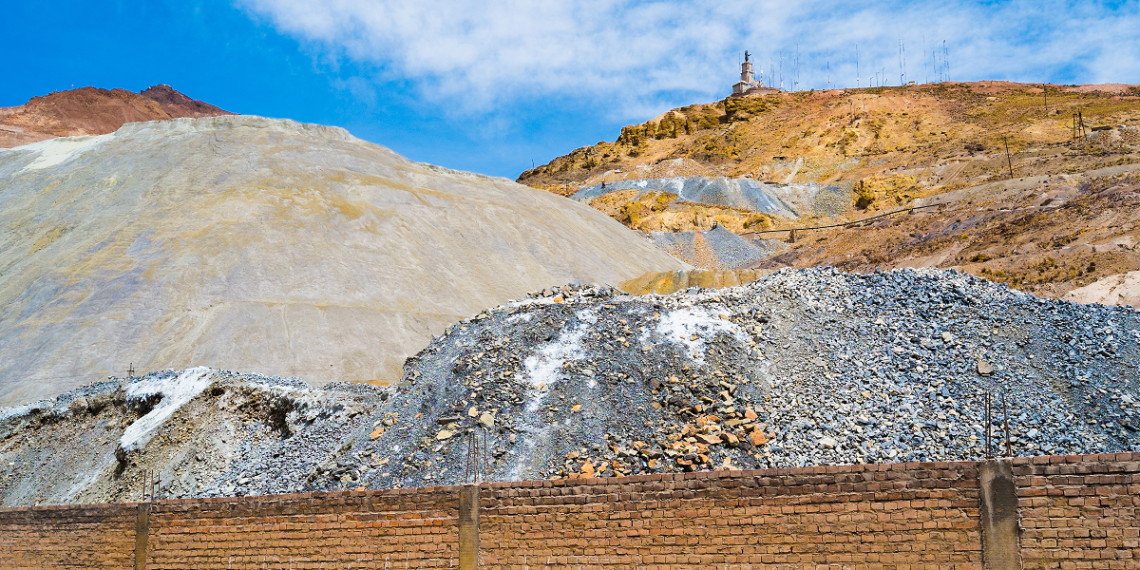Bolivia is currently well-known in the global mining sector as a member of South America’s “Lithium Triangle” and a significant resource holder of the key battery metal. However, it is silver that the country is most famous for, and recent exploration success has attracted renewed attention to its precious metals riches.
While Bolivia has a lengthy silver mining history, the country is still considered to have rich potential – particularly in unexplored areas:
- According to the Bolivian government, more than 60% of the national territory (1,098,581km2) is not mapped and/or explored
- The highlands and the Andes area have a well-known potential for base metals
- In addition, the Uyuni Salt Flats are among the world’s largest lithium deposits which along with other smaller deposits, are rich in non-metallic minerals
- The eastern area of the country has the Mutun iron core deposit, the Precambrian zone has potential for gold and the southeast of the country has potential for platinum-group metals (PGM), nickel and semi-precious stones
According to Statista, in 2021 Bolivia ranked sixth amongst global silver producers with 41.5Moz, just behind Australia (42.9) and Poland (42), and ahead of Chile (41.2), Russia (39) and the USA (32.5).
Several junior explorers continue to record exciting drill results in their search for silver riches. These are just a few of the recent successes.
Eloro Resources – Iska Iska
Eloro Resources Ltd. (TSXV: ELO) has continued to obtain positive assay results from its on-going drilling programme at the Iska Iska silver-tin polymetallic project in the Potosi Department, southern Bolivia.
To date, the company has completed 79,258m in 118 drill holes to-date at Iska Iska, including four holes in progress.
“Results from hole DSB-36 continue to confirm that the high-grade feeder zone extends much further south-southeast across the valley of the Iska Iska caldera as interpreted from our geophysical surveys,” CEO, Tom Larsen, said.
“This new hole has extended the strike length a further 400m to the south-southeast where it remains open along strike. We are continuing to aggressively drill this important target, which has the potential to outline a significant open pittable resource.”
Dr Bill Pearson, Eloro’s executive vice president of exploration, said the company is continuing to carry out our 100m-spaced sectional drilling across the Iska Iska caldera valley.
“We have four holes in progress with four additional holes planned that collectively total 6,000m to complete our first-pass definition drill programme. We expect that this drilling will be completed by the mid to latter part of November.
“Hole DSB-36 was drilled to test the potential south-south-eastern extension of the Santa Barbara High Grade Feeder Zone. This hole was collared approximately 400m south-southeast of the underground drill bay in the Santa Barbara adit and was drilled at an azimuth of 225° with a dip of -60°. This hole intersected many significant intersections,” he added.
New Pacific Metals – Carangas
New Pacific Metals Corp. (TSX: NUAG) has continued to receive positive assay results from the 2022 drill programme at its Carangas Silver-Gold Project, Oruro Department.
Six new deep drill holes were recently completed to define the extent of the gold mineralization beneath a shallow silver mineralization zone which, to date, measures approximately 1,000m long, 800m wide, and up to 200m thick.
With five rigs running at Carangas, a total of 39,862m in 86 drill holes has been completed to date in 2022. Assay results of 39 holes have been received and released.
With the success of resource definition drilling, the company plans to engage independent consultants to carry out an inaugural mineral resource estimate once the drilling is completed by the end of 2022.
IP survey programme
The company also recently completed a 3D Bipole-Dipole IP-MT geophysical survey, which showed a clear correlation between high gold tenors and high chargeability anomalies.
In September 2022, a 3D Bipole-Dipole IP-MT survey was completed in the current (West Dome-Central Valley-East Dome) drilling area by Southern Rock Geophysics S.A., based in Santiago, Chile. This programme tested how the geophysical signature of known mineralization responds to the survey, which successfully identified multiple chargeability anomalies.
Results from the IP survey revealed that holes drilled to date overlap with one of many IP chargeability anomalies. Furthermore, there are several anomalies north of the current drilling area, warranting follow up drill testing.
Cartier Iron – Chorrillos
Cartier Iron Corporation (CSE: CFE) is so excited by Bolivia’s silver potential that it has acquired a new project in the country – and proposed a change of name.
The company recently signed a letter of intent agreement to acquire a 100% interest in the Chorrillos Project, comprising two separate properties known as the Gonalbert Mining area and the Felicidad Mining area, approximately 15 to 20km southeast of Eloro Resources Ltd.’s Iska Iska silver-tin polymetallic project.
The Chorrillos Project
The Gonalbert mining area consists of 10 grids covering 2.5km2 located 15km southeast of Iska Iska. A small artisanal mine recovering silver from a galena vein is in operation on the property.
The Felicidad mining area consists of four grids covering 1.0km2 located about 5km southeast of the Gonalbert mining area. At Felicidad, the main structural feature is a conical hill, highly leached and oxidized known by the locals as “pequeño Cerro Rico” or small rich hill. Past artisanal mining excavated silver-rich galena veins and vein breccias. The geological setting is like the Gonalbert mining area with an intensely mineralized intermediate to high sulphidation epithermal system with a prominent oxidized cap. The property has never been drilled.
Cartier plans a programme of geological mapping, geophysical surveys, sampling of historic workings and trenches followed by diamond drilling on both properties and a name change to Cartier Silver Corporation (CFE: CNX).












